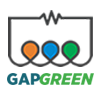The “Public Health Literacy Project in the GAP Region” was supported by 2014 investment programme and implemented in the period 2014-2017.
Goal
The way to prevent early deaths and diseases in a society is to inform people about factors leading to ill-health and how to eliminate these factors. As is the case in other countries of the world ill-health is more common among people with low education levels in Turkey as well. The project aims to develop a visual literacy module that focuses on simple measures to eliminate the causes of early deaths and preventable diseases. The idea is to enable women to learn how to protect their health and access relevant health information while developing their literacy skills at the same time. Participation to literacy courses will be higher since women will also learn in these courses the ways of protecting their health and health of their family members. Another objective of the proposed project is to develop a replicable literacy module that can be incorporated into literacy courses that the Ministry of National Education is organizing for adults in rural parts of the country.
Justification
In the region, three out of every four women over age 25 are illiterate. They are uninformed about what they can do to protect their health and that of other family members. Consequently incidence of disease increases while the cost of health services rises. Learning about the causes of ill-health particularly related to maternal and child health, infectious diseases and diseases related to crop farming and animal husbandry and how to protect from do will considerably mitigate the burden of disease. It must also be noted that a large part of population is engaged in crop farming and animal husbandry particularly after the GAP. Agriculture is defined worldwide as one of the most hazardous sectors for the frequency of early deaths and diseases. In this region where the GAP as one of the largest integrated projects of the world is implemented, improvement of health status of people working in agriculture is one of the priority steps to take for both improving the quality of output and increasing returns to products. The development and use of an easily accessible module on preventing early death and diseases while increasing then rate of literacy at the same time will contribute significantly to the improvement of health and education indicators in the region.
Target Group:
The project covers the region as a whole and thus targets children, adult males and females and elderly people living in the region. It is expected that all health-related sectors will find it easier to develop intervention strategies upon the completion of the project.
Objectives:
The project aims to contribute to efforts for the prevention of early deaths and diseases in the GAP region. Hence the idea is to develop a module supported by visual materials and real life stories and to use this module in different settings including community centres, schools and mosques. The module will inform people about:
- Diseases and problems of health frequently observed in the region,
- Ways of avoiding or eliminating causes of these problems,
The module will be user-friendly in that it can be applied easily in public places like schools, mosques and community centres as well as a tool for self-teaching at home.
Coverage:
The module will approach the issue of health as a state of physical, mental and social well-being. It will be a comprehensive public health literacy module designed to teach risks factors of death and disease and ways of avoiding them.
Activities:
- Creating a working group comprising representatives of the Ministry of National Education, universities in the region (departments of public health, sociology, education, communication and graphic design),
- Preparing brief information notes on causes of frequently observed diseases in the region and ways of prevention,
- Gathering local stories of diseases experienced and their avoidance for developing reading texts,
- Transforming materials into a literacy module,
- Studio shooting of the module,
- Multiplication in form of CD and flash,
- Printing of the module,
- Testing the module in 10 different community centres, schools and religious courses,
- Final revision after pilot work, printing and distribution.

















